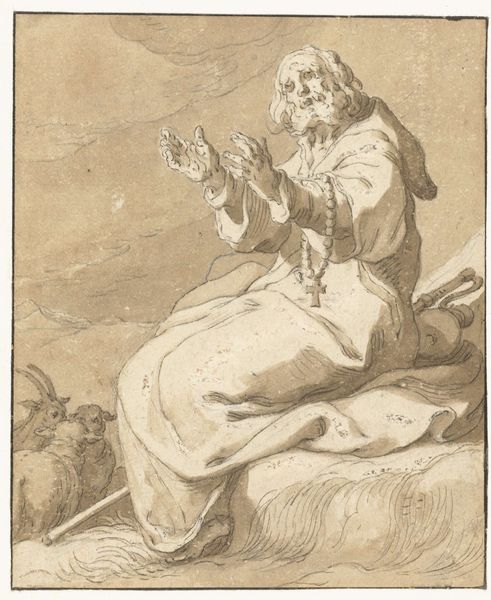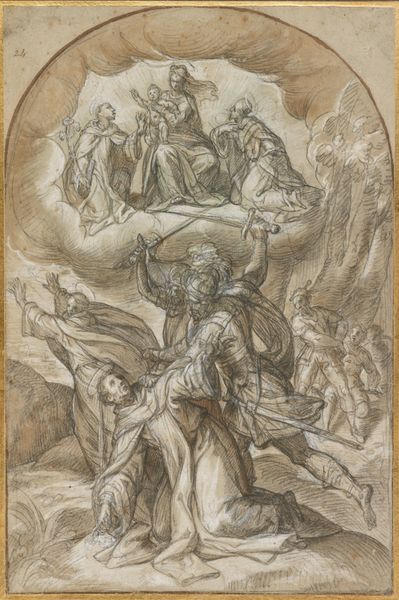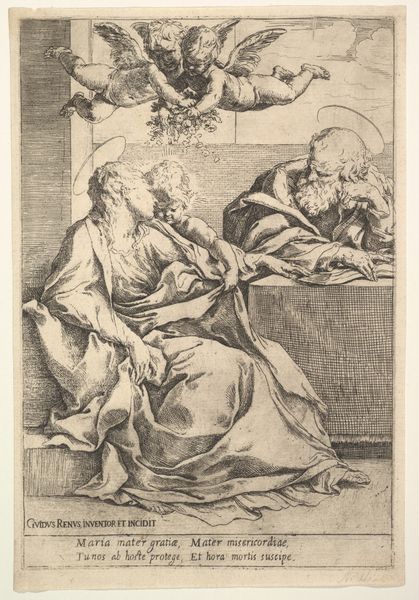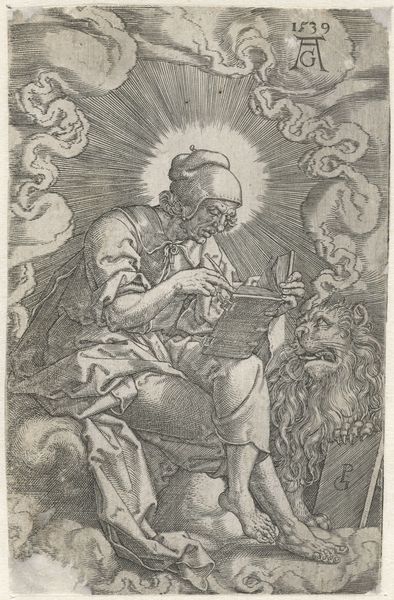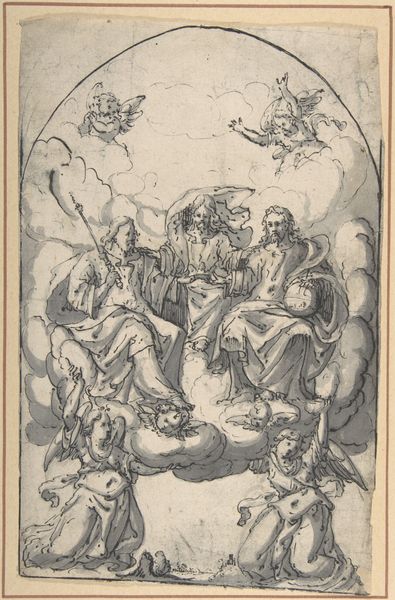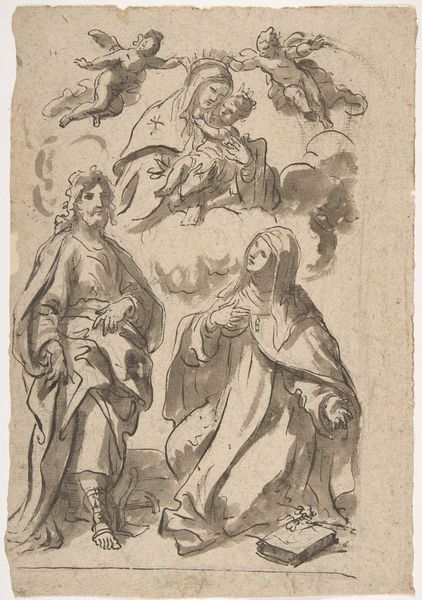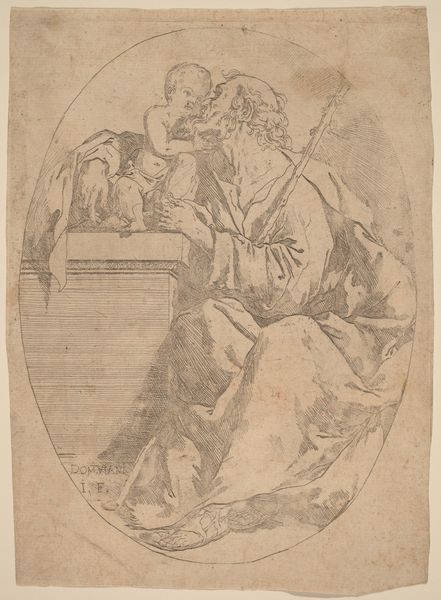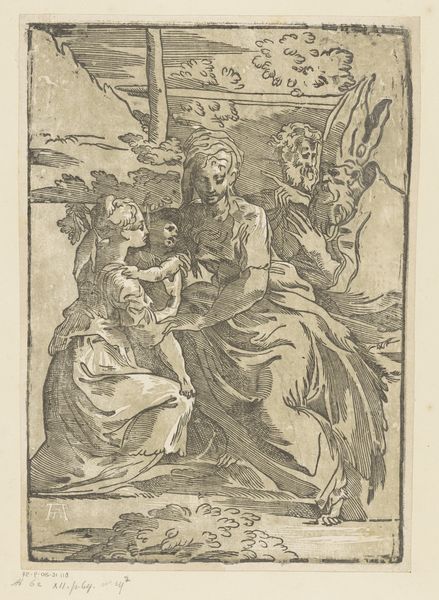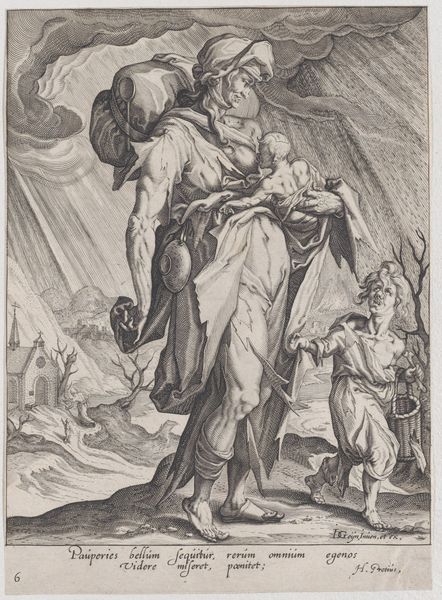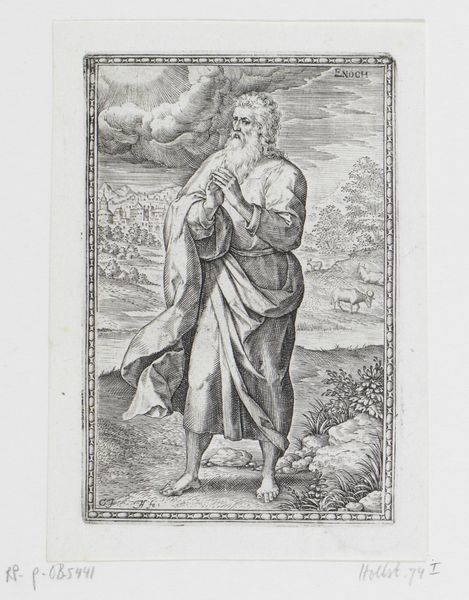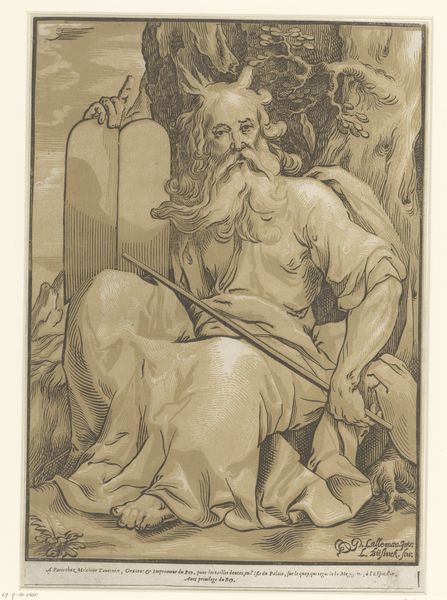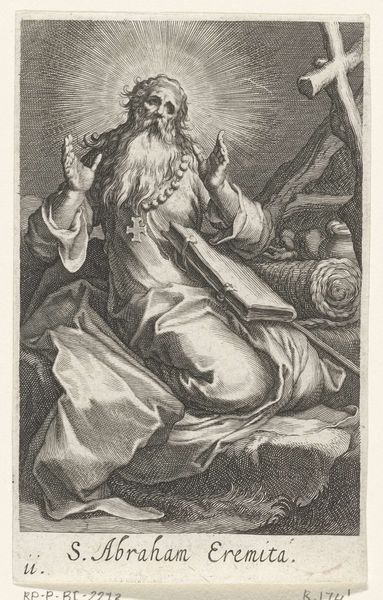
drawing, print, etching, ink, chalk, engraving
#
portrait
#
drawing
#
netherlandish
# print
#
etching
#
11_renaissance
#
ink
#
13_16th-century
#
chalk
#
portrait drawing
#
history-painting
#
engraving
Copyright: Public Domain
Editor: Here we have Hendrick Goltzius's "Saint Anthony Hermitage", a drawing made using etching, engraving, ink, and chalk. The figure has such a powerful presence. What really strikes me is how the artist contrasts the rough textures with a refined, almost luminous light. How do you interpret this work? Curator: It’s interesting to note the ways Goltzius positions this figure of Saint Anthony within a larger narrative, playing on ideas of the solitary ascetic in contrast to the power structures of the Church. The use of light isn't just aesthetic; it's a deliberate representation of divine favor, visually reinforcing the saint's spiritual authority, especially relevant during the Reformation. Do you see any indicators of Goltzius questioning traditional displays of religious power? Editor: Now that you point it out, the isolation, the unadorned setting…it almost feels like a critique of the opulent displays within established churches. He’s presenting holiness in a more personal, less institutionalized form, isn’t he? Curator: Precisely. Consider also the distribution and accessibility of prints during the 16th century. These images became powerful tools in shaping public opinion, presenting alternative models of faith and devotion, challenging the Church's monopoly on spiritual interpretation through visual propaganda. Editor: So the print medium itself plays a role in subverting established authority. I hadn’t thought of it that way. This really makes me rethink how art functioned as a social commentary. Curator: Indeed. This artwork reveals a fascinating intersection between artistic expression, religious reform, and the burgeoning power of visual media to influence public discourse. The distribution method can sometimes amplify the message. Editor: Seeing the political weight within this drawing makes me see it in a totally different light, Thank you. Curator: And thinking about how the medium influences the message opens up new ways to understand Goltzius’s work.
Comments
No comments
Be the first to comment and join the conversation on the ultimate creative platform.
